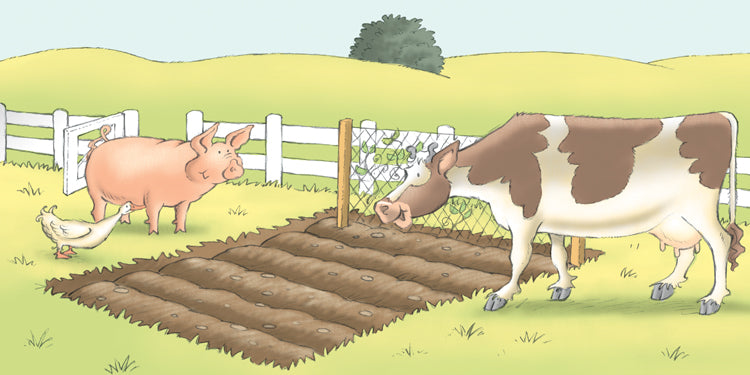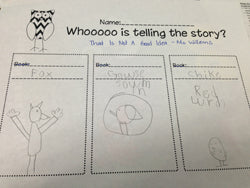 This is a guest blog post from first-grade teacher Lyssa Sahadevan. If you like what you read here,
you can see more from Lyssa on our blog
, or
check out her own blog here
! This post contains a
free "Who Is Telling the Story?" worksheet
at the bottom of the page!
This is a guest blog post from first-grade teacher Lyssa Sahadevan. If you like what you read here,
you can see more from Lyssa on our blog
, or
check out her own blog here
! This post contains a
free "Who Is Telling the Story?" worksheet
at the bottom of the page!
Who Is Telling the Story?
Understanding point of view is important for comprehension, and teaching point of view starts in kindergarten! Students are expected, with support and lots of modeling, to define the role of the author and illustrator in telling the story (
CCSS.ELA-Literacy.RL.K.6
: With prompting and support, name the author and illustrator of a story and define the role of each in telling the story
). In first grade, the standard progresses. Readers are expected to identify who is telling the story at different points in stories and poetry (
CCSS.ELA-Literacy.RL.1.6
: Identify who is telling the story at various points in a text
).
What does this look like in K–1? It starts with lots of modeling during read aloud. We say things like, “Who is doing the talking on this page? How do you know?” From there we move to having students interact with the read aloud by becoming the character. While reading a Mrs. Wishy-Washy book , I have a student stand up and “be Mrs. Wishy-Washy” when she calls to the animals. Why? Because Mrs. Wishy-Washy is talking during that part! Adding this movement and drama really pulls readers into the story, thus building comprehension.
While reading The Gingerbread Man , we discuss how a narrator (storyteller) is telling the story like they are watching it on TV. We practice this by narrating activity in our classroom. We do this with lots of books and lots of characters! The sillier, the better!
After scaffolding for some time, kindergartners and first graders are ready to tackle this standard independently! I give each student a copy of the “Whoooo Is Telling the Story?” activity page to record their thinking. Using books from their "just-right bags," students write the title of the book, read it, and record with pictures and/or words who is doing the talking.
If there is more than one character doing the talking, they draw/write more than one! This could also be used as a formative assessment. For students who do not quite have it yet, I pull a small group together, and we repeat the practice. I preselect books with a narrator telling the story, an animal, and a sibling or friend. Here is my favorite set of books for teaching this skill! They work with students on any reading level!

Books pictured are from the Joy Cowley Collection and Joy Cowley Early Birds .
I’ve included the “Whoooo Is Telling the Story?” worksheet for you to download at the bottom of the page. I hope your readers enjoy it as much as mine do! Happy reading!
Lyssa Sahadevan is a first-grade teacher in Marietta, GA. She loves reader's and writer's workshop, is a former Teacher of the Year, and shares ideas at www.mymommyreads.com .
To download a free PDF of Lyssa's "Whoooo Is Telling the Story?" worksheet, click the template image below! To learn more about the Joy Cowley books used as an example in this post, click the series highlights images below to download free information sheets explaining key features of the Joy Cowley Collection and its lower-level counterpart, Joy Cowley Early Birds .
























































